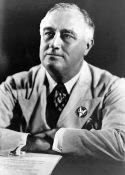Tuesday, June 30, 2009
Flaneur of the Times
Scher joins a long tradition of the flaneur, walking through the city -- Paris, London, New York, Berlin, Rome -- reading the people.
Scher's animation suggests the evanescent mental images and associations he reads in the people he encounters.
Rhetoric, Science, and Magic

Ryan J. Stark, Rhetoric, Science, and Magic in Seventeenth-Century England (Washington: Catholic University of America Press, 2009).
Powell's Books
Amazon
From the Amazon description provided by the publisher:
Rhetoric operated at the crux of seventeenth-century thought, from arguments between scientists and magicians to anxieties over witchcraft and disputes about theology. Writers on all sides of these crucial topics stressed rhetorical discernment, because to the astute observer the shape of one's eloquence was perhaps the most reliable indicator of the heart's piety or, alternatively, of demonry. To understand the period's tenor, we must understand the period's rhetorical thinking, which is the focus of this book.Ryan J. Stark presents a spiritually sensitive, interdisciplinary, and original discussion of early modern English rhetoric. He shows specifically how experimental philosophers attempted to disenchant language. While rationalists and skeptics delighted in this disenchantment, mystics, wizards, and other practitioners of mysterious arts vehemently opposed the rhetorical precepts of modern science. These writers used tropes not as plain instruments but rather as numinous devices capable of transforming reality. On the contrary, the new philosophers perceived all esoteric language as a threat to learning's advancement, causing them to disavow both nefarious forms of occult spell casting and, unfortunately, edifying forms of wonderment and incantation. This fundamental conflict between scientists and mystics over the nature of rhetoric is the most significant linguistic happening in seventeenth-century England, and, as Stark argues, it ought profoundly to inform how we discuss the rise of modern English writing.
Ryan J. Stark is assistant professor of English at Pennsylvania State University.
Wednesday, June 17, 2009
Cost of Study Abroad
 Part of what is happening to the cost of study abroad is illustrated in this graph from the Federal Reserve Bank of St. Louis illustrating the history of the dollar-to-euro exchange rate. One Euro will today cost about $1.40 in U.S. dollars.
Part of what is happening to the cost of study abroad is illustrated in this graph from the Federal Reserve Bank of St. Louis illustrating the history of the dollar-to-euro exchange rate. One Euro will today cost about $1.40 in U.S. dollars.
Thursday, June 11, 2009
Study Abroad on Trial
Meanwhile, it is reported in the Chronicle of Higher Education that the House of Representatives today passed the Paul Simon Study Abroad Foundation Act, which proposes to vastly enlarge the number of U.S. students enrolled in study abroad.
Timothy Egan, "An Innocent Abroad," New York Times, 11 June 2009.
Tuesday, June 2, 2009
Taking Note
Farhad Manjoo in the New York Times writes of new note-taking software, and makes a special case for Evernote, which has the advantage of storing notes on the Internet, thereby accessible from any computing platform. Google Notes would do this for you as well, but Google has announced that it is no longer developing the application, and this emphasizes the problem with using any computer application for note-taking -- it needs to stay in business or your notes won't be of any use to you.
Manjoo reports that the best current application is Microsoft's OneNote, but the application is available only for the PC--there is no Mac version. In addition to the applications mentioned by Manjoo , there are of course database applications such as Filemaker, and bibliography programs, such as EndNote. For another free application, I'm also currently exploring Scribe, developed by the Center for History and New Media at George Mason University. CHNM is also the developer for Zotero , which CHNM advertises as a successor application to Scribe, able to handle both bibliographic entries, with web capture, and standalone notes. CHNM has developed a number of other useful applications.
Most of the dedicated note-taking programs are based on one or both of two assumptions -- that the researcher is making notes that copy, comment on, or amplify parts of a published source the primary reference to which is part of a bibliography; or that the notes are being saved as part of a process of clipping from web-based pages. Most of the programs make it possible to take free-standing notes -- something like the old-fashioned 3x5 or 4x6 card -- but that is not the standard metaphor for all of them.
Farhad Manjoo, "Bringing Order to the Chaos of Notes," New York Times, 27 May 2009.


















